Table of Contents
Introduction
Goat farming has become one of the most trustworthy and rewarding practices in recent agriculture, particularly for small and marginal farmers with a view to increasing revenue from available land resources.
As there is increasing demand for goat milk, meat, and other by-products, farmers in India and other developing countries are shifting towards structured goat farming as a viable livelihood strategy.
In contrast to large-scale commercial operations, goat keeping can be initiated with comparatively low capital and offers stable returns, which is a good option for rural families.
When coupled with poultry rearing, total farm revenue doubles as goats and poultry complement one another in their use of feed, waste disposal, and market demand. The two areas of animal husbandry together are essential to the development of sustainable rural economies as well as nutritional security.
Consumer desire for organic, chemical-free produce has increased interest in farm animals. Families are opting more and more for goat milk because of its medicinal properties and chicken meat due to its protein-based diet, which guarantees steady demand.
This opening section lays the background for learning why goats and chickens have turned into pillars of lucrative farming, and how the following “7 Proven Secrets” can help novice and seasoned farmers achieve success.
By integrating traditional knowledge with scientific practices, farmers can make small-scale animal rearing a successful business that guarantees economic and social advantages.
Advantages of Goat Farming and Poultry Farming
Economic Advantages of Goat Farming
One of the biggest benefits of goat rearing is that it can provide consistent and assured income all year round. Goats are commonly called “poor man’s cow” due to their easy adaptability, low cost of maintenance, and fast breeding cycle.
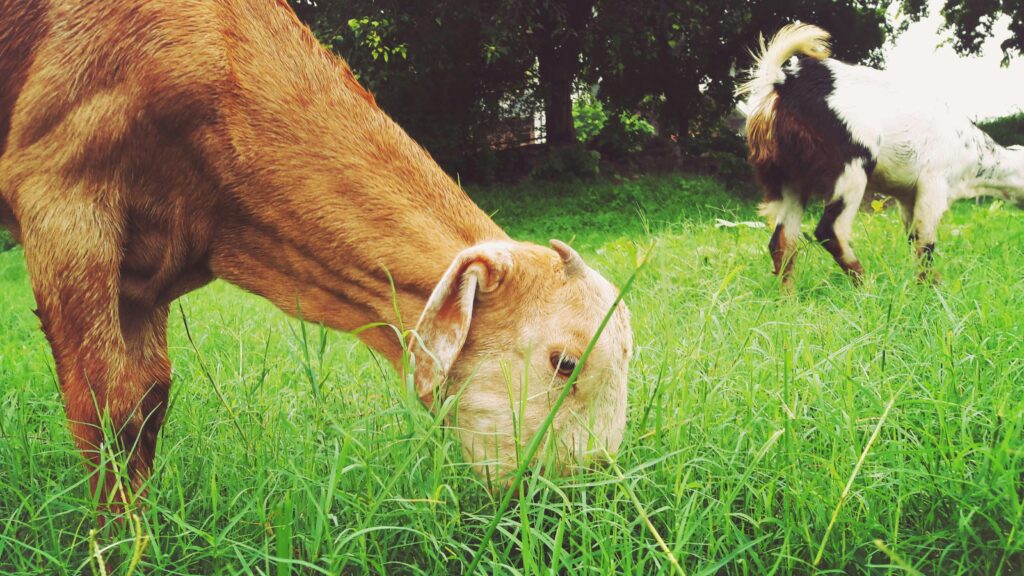
One doe can give birth to several kids per year, making the herd increase very fast and making farmers more profitable. Chevon, the popular name for goat meat, commands a steady market with demand throughout the year, usually at a premium price compared to other meats.
Furthermore, goat milk is also becoming more popular as it is highly digestible and also has numerous health benefits, thus being a lucrative commodity in both the rural and urban markets.
Goats also act as a source of direct income and financial security for small-scale farmers, as they can readily be sold during times of emergency. As opposed to extensive livestock, goats consume smaller areas of land and resources, hence perfect for rural homes with small agricultural properties.
Nutritional & Social Advantages of Poultry Production
Although goats offer milk and meat, poultry production complements them through the provision of eggs and chicken meat, both sources rich in protein and important nutrients. Poultry is a common commodity in most households, providing a steady market that assures constant returns for farmers.
Chickens are fast-growing, mature rapidly, and represent relatively low investment, which makes them very profitable in short cycles of production.
In addition to economics, poultry farming also serves to enhance nutrition at the community level since poultry supplies an affordable source of protein for rural communities. Furthermore, poultry waste can be used as organic manure, enhancing soil fertility while minimizing the use of chemical fertilizers.
In combination with goat farming, poultry farming makes a diversified agricultural system that reduces risk and optimizes production. Combined, these advantages demonstrate how integrated livestock farming can enhance livelihoods, enhance food security, and promote sustainable rural development.
Environmental & Sustainable Advantages of Farm Animals
Integrating goat farming and poultry farming also has another important benefit in the aspect of environmental sustainability. In contrast to extensive grazing land and water needed by large livestock, goats are capable of thriving in semi-arid and marginal lands where crops usually do not grow.
They survive on shrubs, weeds, and crop residues, which saves on feed and avoids wastage of resources. Goats are, therefore, perfect farm animals for sustainable farming systems. Natural soil enrichment comes from poultry.
Chicken manure contains high levels of nitrogen, phosphorus, and potassium, all of which are needed for the growth of crops.
When properly applied, it lowers the dependency on chemical fertilizers and encourages organic farming methods. In addition, combining these animals provides a synergistic system: goats assist with weed control, and poultry increase soil fertility.
This not only decreases input prices but also increases farm productivity over the long term. By raising goats and poultry simultaneously, farmers not only guarantee profitability but also make contributions to climate-smart agriculture, which is important for the future of sustainable food supplies.
Techniques: 7 Proven Secrets of Goat Farming & Poultry Farming
1. Selection of the Ideal Breeds of Farm Animals
The starting point for successful goat farming and poultry farming is choosing the ideal breeds appropriate to local conditions. Amongst goat rearing, highly valued breeds like Boer, Sirohi, and Jamunapari are sought due to their maximum meat and milk production.
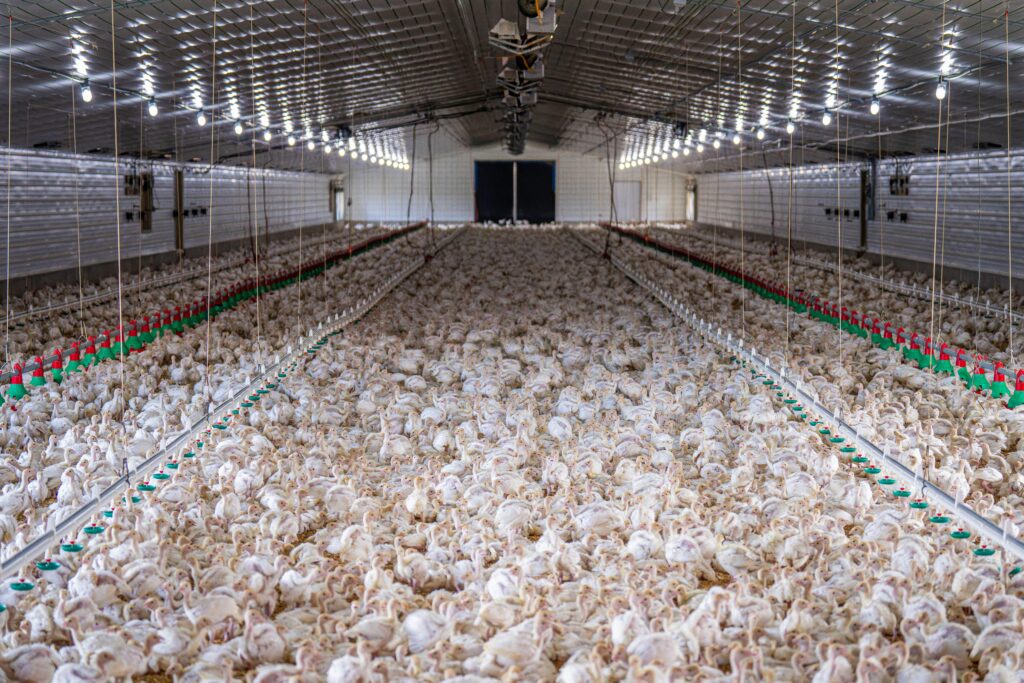
Farmers must thoroughly assess the reason for rearing—either milk, meat, or dual-purpose—to select suitable breeds accordingly. Likewise, among poultry, high-yielding breeds like Broilers for meat and Layers for eggs provide the maximum return in a short span.
Indigenous breeds are also drawing interest due to their resistance to diseases and ability to accommodate local climates. A farmer who acquires the right livestock animals at the outset greatly lowers the risks of losses through lack of productivity or heavy mortality.
Additionally, better breeds not only command better prices in the market but also raise consumer confidence in the quality of products. Therefore, breed selection is the secret number one that goes towards making animal husbandry businesses profitable in the long term.
2. Scientific Housing and Shelter Management
The second secret to successful goat farming and poultry farming is the provision of good housing facilities. Goats need ventilated houses that shield them from harsh weather and allow free movement. Slatted and dry floors avoid infections like foot rot, a common feature of goats housed in wet places.
For poultry, housing must provide optimal temperature, humidity, and light exposure for birds’ healthy growth. Deep-litter or cage systems are widely employed based on the size of production and farmer’s resources.
Goats and chickens are both responsive to overcrowding, which can result in stress, disease outbreak, and lower productivity. Suitable housing provides not only comfort but also increased feed efficiency and reproductive success.
When farmers provide minimal, sanitary, and well-organized living conditions to their farm animals, they set the stage for long-term sustainability. Proper housing also facilitates easier disease control as a final consequence of ensuring regular farm income and minimal mortality rates.
Result 3: Balanced Nutrition and Feed Management
One essential secret to successful goat farming and poultry farming is balanced nutrition. Goats are browsers by nature and rely on leaves, grasses, shrubs, and crop residues. But with the addition of protein-laden feed, vitamins, and minerals, milk yields and growth rates are considerably increased.
Poultry, in turn, requires a well-formulated mix of feed with high contents of energy, protein, calcium, and micronutrients. Eggshell strength necessitates high levels of calcium in layer birds, whereas broilers require additional protein for muscle growth.
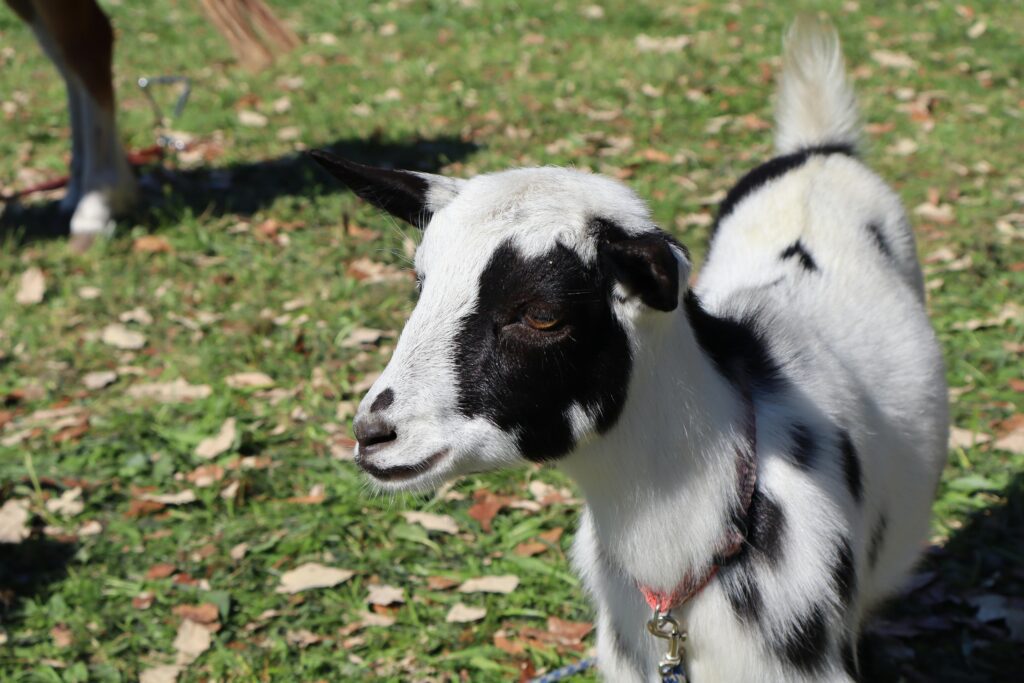
Farmers can also minimize feeding costs using locally sourced resources like kitchen waste, agricultural residues, and fodder produced on the farm. Goats and chickens can also be incorporated for effective use of waste—poultry can eat small insects and discarded grains, while goats can browse crop residues.
Efficient feeding management keeps farm animals healthy, weight gain occurs more quickly, and reproduction is efficient. Through proper nutrition, not just better yields are obtained, but farmers also establish consumer trust in the quality of their meat, milk, and eggs.
4. Efficient Healthcare and Disease Management
One of the most underutilized areas of goat farming and poultry farming is proper healthcare. Healthy animals translate to greater productivity, while diseases can result in very heavy financial losses.
Goats are susceptible to diseases such as pneumonia, foot rot, and internal parasites, while poultry is exposed to issues like Newcastle disease, coccidiosis, and respiratory infections. Preventive medicine is the way to avoid these issues.
Vaccination schedules from time to time, deworming, and regular veterinary check-ups must form part of all farm plans. Clean water, sanitation, and biosecurity also decrease the likelihood of outbreaks. For instance, segregation of new or ill animals avoids spreading infections to the herd or flock.
Investing in the health of the farm animals by farmers not only mitigates mortality but also boosts productivity levels so that farmers enjoy steady returns. A proactive health management strategy is the fourth secret that helps small farms become lucrative enterprises.
5. Strategic Breeding Practices
Breeding management is another strong secret which guarantees long-term profitability in poultry farming and goat farming. Selective breeding improves favorable characteristics like greater milk production in goats or increased growth rates in broilers.
Artificial insemination, although still restricted on small farms, is slowly being embraced in order to enhance genetics and produce better outcomes. Goats tend to breed rapidly, having several kids per litter, hence playing a crucial role in quick herd growth.
In the same vein, chicken has a very short life cycle, and their numbers can be boosted within a matter of months. Proper documentation of breeding cycle, birth, and growth performance is essential in tracking progress.
Through strategic breeding, farmers establish a closed-loop system where their farm animals are constantly improving on productivity and market worth. This decreases the reliance on buying new animals from external sources, saving money and making farm profitability even stronger in the long run.
6. Waste Management and Resource Utilization
A special but very lucrative secret of goat rearing and chicken rearing is effective waste management. Goats and poultry produce organic waste that, if properly managed, can be a useful resource.
Goat dung is rich organic manure that supplies the soil with valuable nutrients to enhance crop yields without relying heavily on chemical fertilizers. Poultry dung is rich in nutrients as well and is used extensively as compost or even as a source for biogas production.
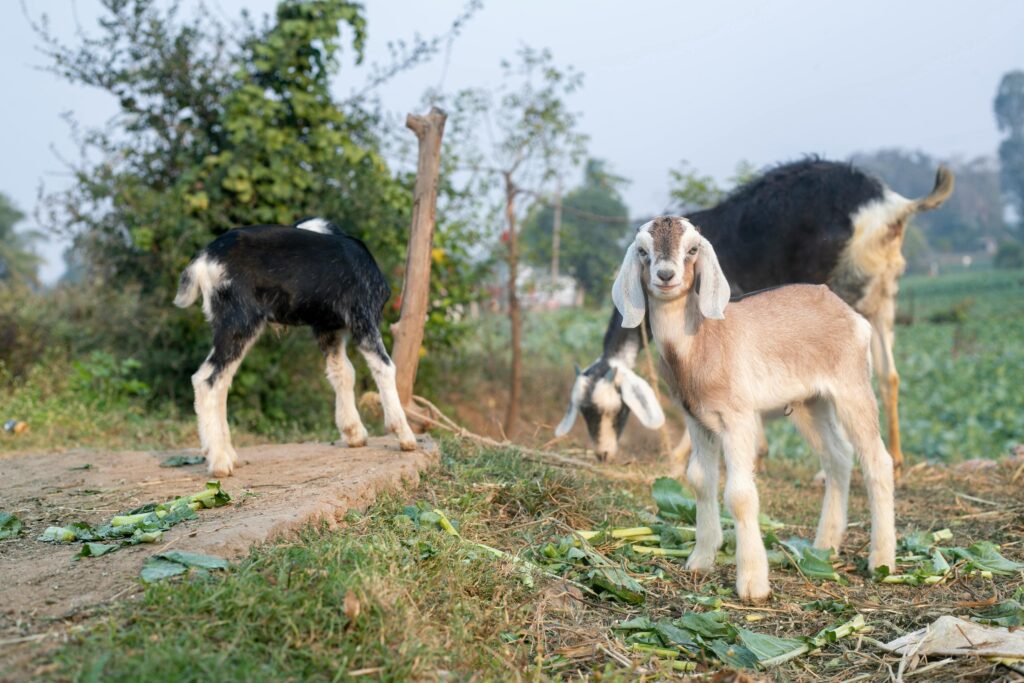
Farmers incorporate these waste materials into agro systems so that nothing is wasted. Actually, most of these farmers gain additional income from selling manure to organic farmers, making it an additional source of income.
Efficient use of resources not only makes farming more profitable but also guarantees environmentally friendly farming practices.
When farm animals are raised with an emphasis on waste management, they help promote green agriculture while minimizing farm costs, making this the sixth secret to long-term success that has been proven.
7. Value Addition and Smart Marketing
The last key to profitability in goat rearing and poultry rearing is marketing. Most farmers concentrate only on production but do not understand the significance of selling products at the appropriate time and price.
Goats can be sold for meat during festivals when there is increased demand, while goat milk can be transformed into cheese, soap, or flavored drinks for improved returns.
In the same way, chicken farmers can boost revenue by marketing eggs in branded containers or organic, free-range chicken meat, which enjoys a booming market among health-oriented buyers. Online forums and local markets offer several avenues for direct contact with buyers and eliminating middlemen.
Value addition could be the strategy farmers use to obtain premium prices for their produce. Successful marketing makes the effort of rearing farm animals count in terms of actual income, ensuring the sustainability and development of the farm.
Problems of Goat Farming and Poultry Farming
Financial Constraints and Capital Investment Problems
Financial limitation is one of the initial problems small farmers encounter when engaging in goat farming or poultry farming. Even though these businesses need less capital than major livestock operations, setup costs for superior breeds, sheds, and feed are still considerable.
Rural farmers in many cases use their own savings or informal credit providers, which tends to generate financial stress in the initial period of farming. Without good planning, sustaining operations until the farm begins to earn stable income is challenging.
Another challenge is variable feed costs, which have a direct bearing on profitability. Small-scale farmers tend to compromise on housing or healthcare to cut expenses, only to realize later on in the farm animal mortality rates.
Overcoming this challenge necessitates improved access to credit facilities, subsidies, and government schemes promoting small-scale animal husbandry.
Outbreaks of disease and mortality risks
Disease management is amongst the greatest challenges in goat farming and poultry farming. Goats are susceptible to parasitic infestation and respiratory diseases, whereas poultry tends to fall prey to viral diseases such as avian flu, which can kill flocks in a matter of days.
Inadequate awareness of the vaccination schedule, poor hygiene, and crowding exacerbate the issue, particularly in the countryside where veterinary care is scarce. Several farmers lack access to effective diagnostic equipment or affordable medicines, and because of this, losses become avoidable.
Death rates among young goats (kids) and chicks are usually high, deterring farmers from expanding their businesses. Farm animals are the backbone of such businesses, and their health will directly affect earnings and viability.
Training farmers in biosecurity, preventing delay in vaccinations, and enhancing veterinary infrastructure are the ways this challenge can be addressed.
Market Fluctuations and Middlemen Dependency
Another significant obstacle to profitability in goat rearing and poultry rearing is reliance on middlemen and volatile market fluctuations. Demand for chicken, goat meat, eggs, and milk is normally high, but prices fluctuate depending on season, festivals, or conditions of supply.
Farmers who are not in direct contact with markets are compelled to sell farm animals at lower prices to middlemen, sacrificing a good amount of their profits. Inadequate storage and processing facilities further undermine their bargaining capacity, particularly for perishable commodities like milk and eggs.
Most small-scale farmers are ignorant of alternative modern marketing channels like e-commerce, farmer cooperatives, or local branding options. Without a secure market approach, even the most efficiently managed farms find it difficult to attain consistent profitability.
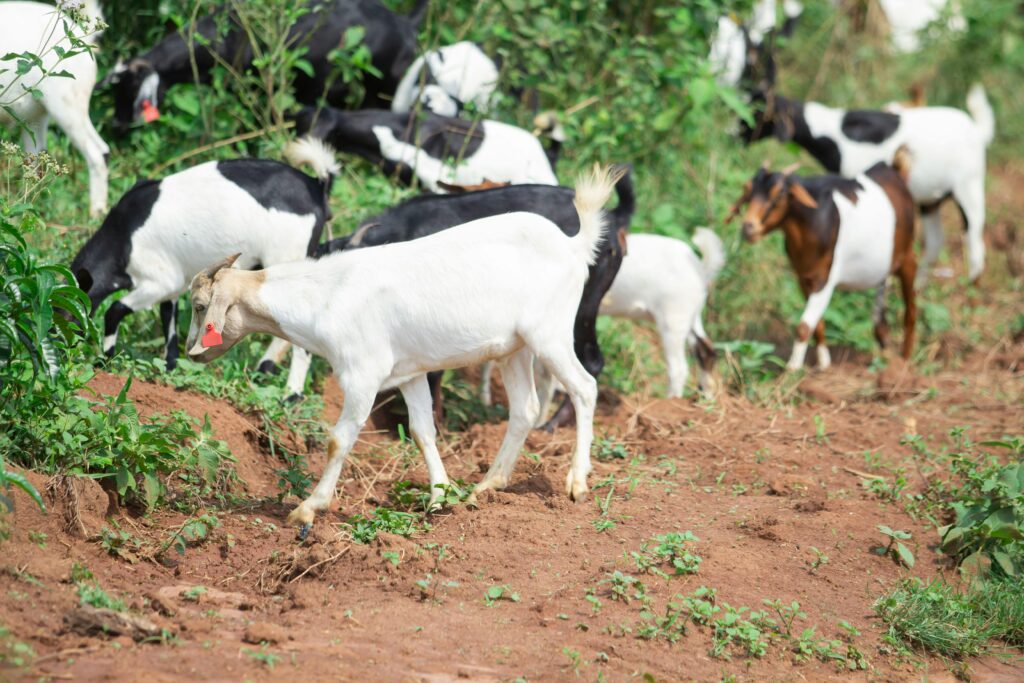
This issue underlines the importance of awareness programs and collective forums that directly link farmers with consumers.
Solutions for Profitable Goat Farming and Poultry Farming
Access to Finance and Government Support
In order to meet financial problems in goat farming and poultry farming, farmers can seek institutional credit schemes, subsidies, and government schemes favoring small livestock businesses.
Several governments lend money under rural development or animal husbandry schemes at low interest and easy repayment terms. Access to these funds can enable farmers to spend on improved housing, quality breeds, and better feed without hurting personal finances.
Farmer cooperatives and self-help groups also provide important forums for sharing investment risk and combining resources. NGOs and private organizations also conduct training programs to enable farmers to acquire financial literacy and business planning skills.
By capitalizing on these avenues, small-scale farmers are able to expand their activities slowly and enhance the overall productivity of their farm animals without getting caught in debt traps.
Preventive Healthcare and Training Programs
Disease outbreaks continue to pose one of the largest threats to profitability, but they can be reduced with preventive healthcare practices. Periodic vaccination schedules, early deworming, and better sanitation practices do a lot to keep goat farming and poultry farming activities free of diseases.
Farmers need to be taught about identifying early warning signs of disease in their animals and keeping proper sickbay facilities for them. Setting up local veterinary support units and mobile clinics can bring healthcare to the doorsteps of rural communities.
Biosecurity practices like restricting visitors to chicken sheds, equipment disinfecting, and shelter cleanliness in goat sheltering should also be taught through awareness campaigns.
There is a strong emphasis on training that not only decreases mortality rates but also boosts overall productivity, keeping farm animals healthy and profitable.
Market Access and Value Addition Strategies
The best way to overcome market dependence is to build direct market access. Farmers who keep goats and poultry can venture into farmers’ markets, cooperatives, or even online markets to market their products directly to consumers.
This bypasses intermediaries and yields better profit margins. Value addition, such as converting goat milk to cheese, yogurt, or soap, or packaging eggs or chicken meat with local brands, is another strategy.
The products can command premium prices in urban areas where demand for organic and chemical-free products is increasing. Farmers can also get better terms, split transport costs, and market their farm animals and products collectively by organizing themselves into producer groups.
Strong branding, certification, and narrative of the farm’s natural approach also increase consumer confidence and assist farmers in building sustainable income streams.
FAQs on Goat Farming and Poultry Farming
1. Is goat farming truly lucrative for marginal or small farmers?
Yes, goat farming is extremely lucrative, particularly for marginal and small farmers. Goats are less land-intensive, tend to thrive under varied climatic conditions, and breed rapidly, thus making herd growth steady.
Goat meat commands a strong market, usually being sold at premium prices compared to other meats, while goat milk is prized for its curative value. It is possible for farmers to begin with a small number of animals and increase the number over time as incomes rise.
Goats will graze on shrubs, weeds, and crop residues, so feed costs are relatively low. Added to the benefit of selling manure as organic fertilizer, goat farming presents several sources of income.
With the right selection of breed, housing, and health care, small farmers too can have a regular profit from goats and utilize the business as a good source of financial stability.
2. How does goat farming relate to poultry farming?
Goat farming is well complemented by poultry farming because goat farming offers farmers an additional source of income and a guarantee of food security. Whereas goats provide meat and milk, poultry provides chicken meat and eggs consumed every day by most households.
The combination of these farm animals makes a stable farming system: poultry droppings can serve as organic manure for crops, and goats serve as weed controllers by feeding on crop residues. This symbiotic relationship lessens input expenses and optimizes farm efficiency.
In addition, poultry matures rapidly and pays returns in weeks, whereas goats yield medium to long-term returns. Combined, they ensure year-round profitability and do not cause farmers to be reliant on a single product.
This also adds financial security as well as sustainable agriculture, and hence, it is a good model for rural villages.
3. What are the biggest challenges in goat and poultry farming?
The most significant challenges in goat rearing and poultry rearing are financial constraints, outbreak of diseases, and market dependence. The farmers usually get into trouble in managing capital for good breeds, housing, and ration.
Pneumonia in goats or avian influenza in poultry can result in tremendous losses if preventive medical care is not adopted.
Insufficient veterinary services and lack of knowledge regarding vaccination timetables enhance mortality levels among farm animals, deterring farmers from increasing their operations.
Fluctuation in the market and dependency on intermediaries also decrease profit margins, as farmers are compelled to sell their produce at reduced prices.
The absence of good awareness regarding contemporary marketing procedures and value addition chances also hinders competitiveness in the current market. To meet these challenges, there is a need for improved training, funding, access to healthcare, and direct market connections.
4. How can farmers maximize profits from farm animals?
Farmers can maximize profits from farm animals through breed selection, feeding, and value addition. In the case of goat rearing, adopting high-yielding breeds such as Jamunapari or Boer can lead to improved milk and meat production.
In poultry, the selection of breeds that are suitable for egg or meat production will maximize returns. Offering nutrition with an equal balance and ensuring clean housing increases productivity with decreased risk of disease.
Value-added items like goat milk soap, goat cheese, branded eggs, and organic chicken meat are other opportunities for farmers. Direct market opportunities such as selling to local consumers, cooperatives, or via digital platforms reduce middlemen and enhance revenue.
Waste management activities such as the sale of goat manure or poultry litter as fertilizer generate additional revenue. When these approaches are adopted on a regular basis, farmers convert their farm animals into long-term value assets.
5. What is the scope for goat farming and poultry farming in the future?
The future of poultry farming and goat farming is extremely bright because there is increasing demand for meat, milk, and eggs all over the world. People are looking for more organic, chemical-free, and protein-based food, which is providing an ever-increasing market for the products of these farm animals.
Goat milk is also attracting attention for its health value, while poultry products are among the staple foods in urban and rural areas. With improvements in breed, shelter, and disease management, productivity levels are likely to increase even more.
The government support, farmer cooperatives, and e-commerce tools are also enabling farmers to reach markets directly. Furthermore, farming systems integrated with goats, poultry, and crops are on the increase as models of sustainable rural development.
Generally, the scope is broadening fast, and hence the sector is a viable and rewarding option for the future.
Conclusion
Growing a successful livestock business is a journey that starts with knowledge, planning, and perseverance. As we can see, goat rearing and poultry rearing are not mere age-old occupations but highly potent livelihood activities that can revolutionize the lives of marginal and small farmers.
Goats as well as poultry are hardy livestock that can thrive under a variety of conditions, with relatively low investment, and offer multiple sources of income through meat, milk, eggs, and by-products.
By applying the “7 Proven Secrets” — choosing the right breeds, ensuring proper housing, providing balanced nutrition, practicing preventive healthcare, adopting strategic breeding, managing waste effectively, and implementing smart marketing — farmers can overcome common challenges and achieve sustainable profits.
The integration of goats and poultry creates a complementary system where resources are optimized, waste is recycled, and productivity is maximized. Parallel to this, however, these practices also ensure food security, rural livelihood, and environmental stewardship.
The market for goat meat, milk, and poultry products will only increase, providing farmers with a bright future ahead. For those who are willing to make it through, the secret is in learning constantly, embracing new techniques, and being linked to markets.
Whether you’re a new farmer or have a lot of experience, adopting these practices can make your love for farm animals a lucrative and fulfilling business. Now is the time to do it — go small, plan well, and let your farm blossom as a sustainable source of income and wealth.
